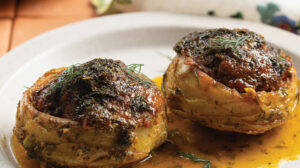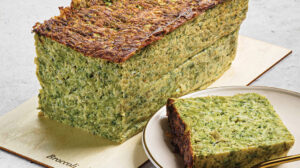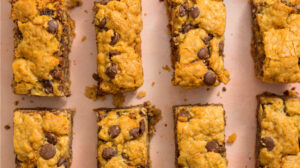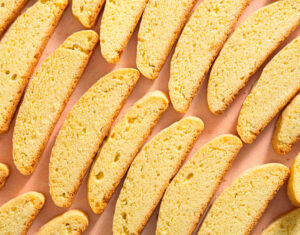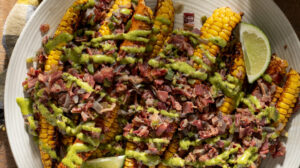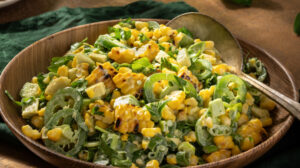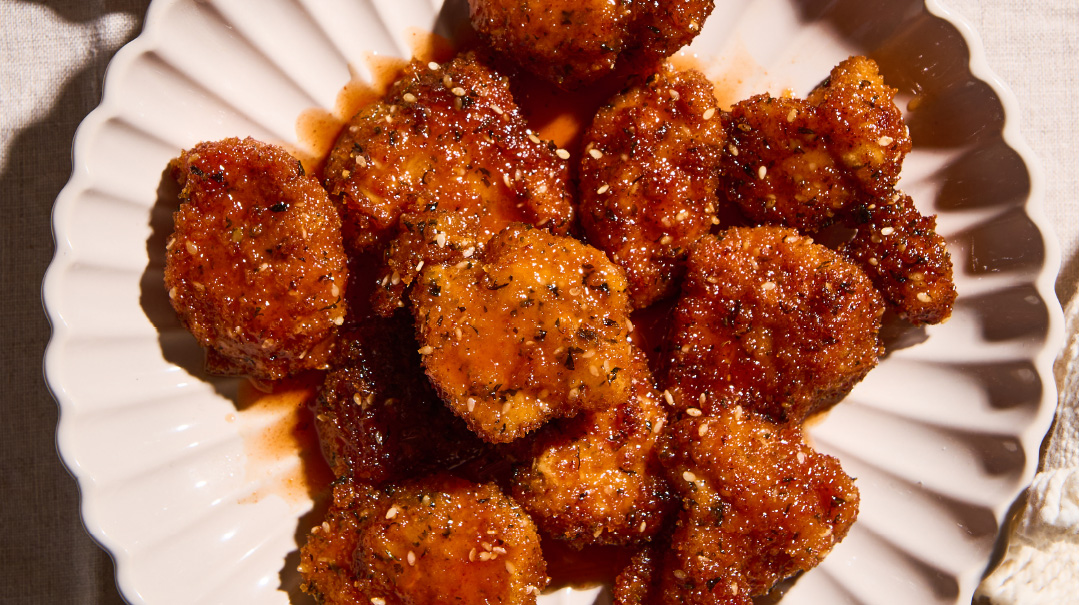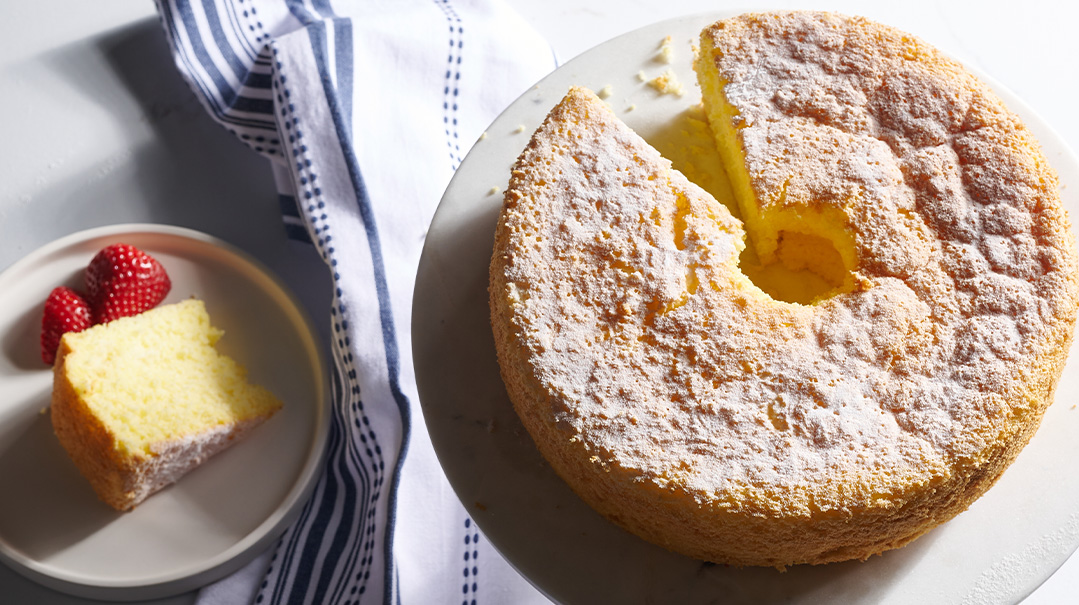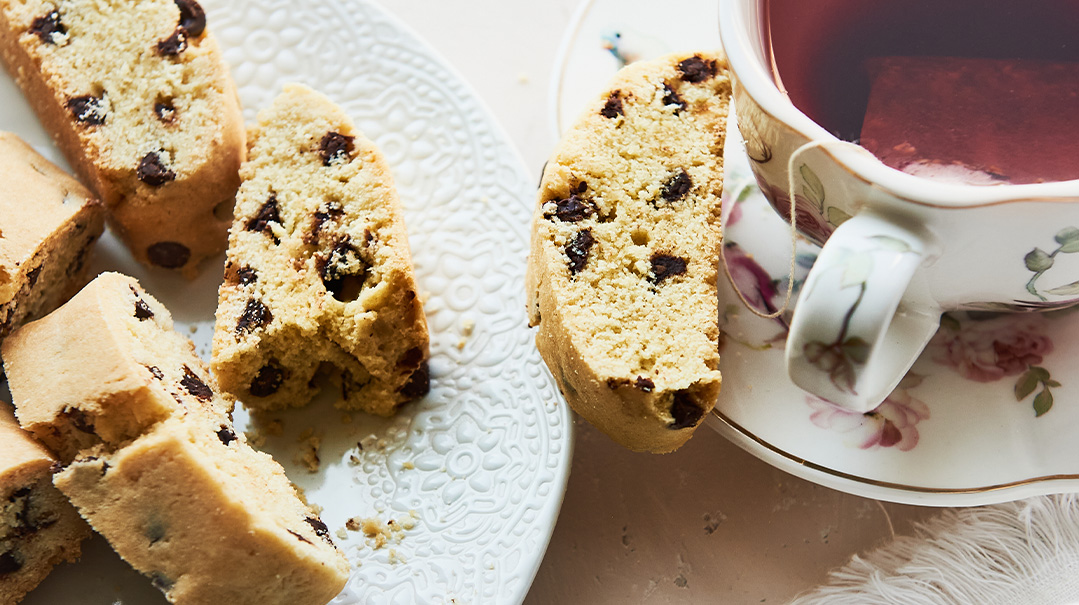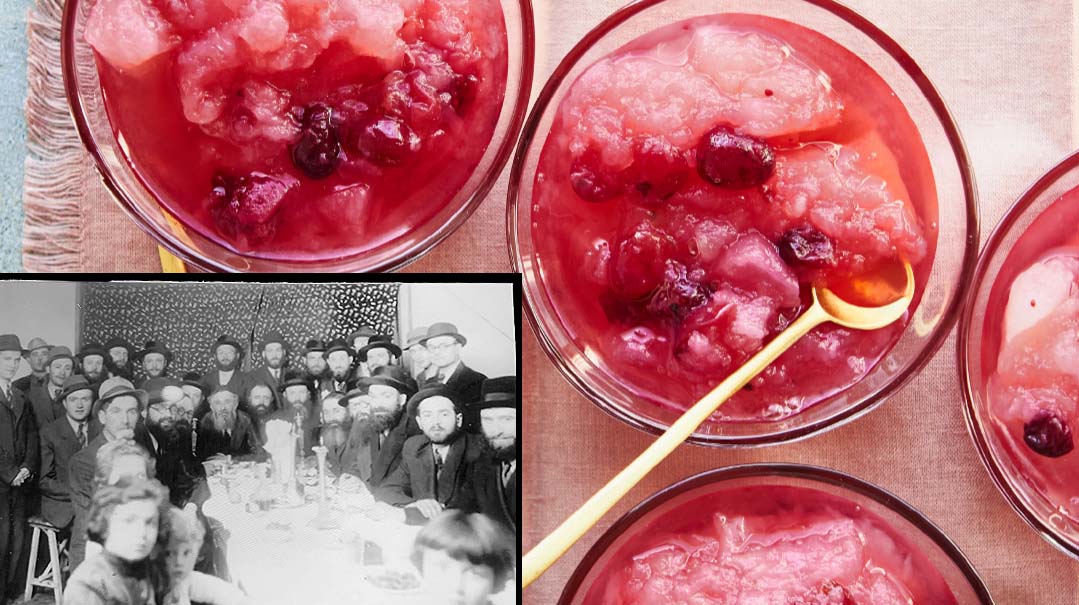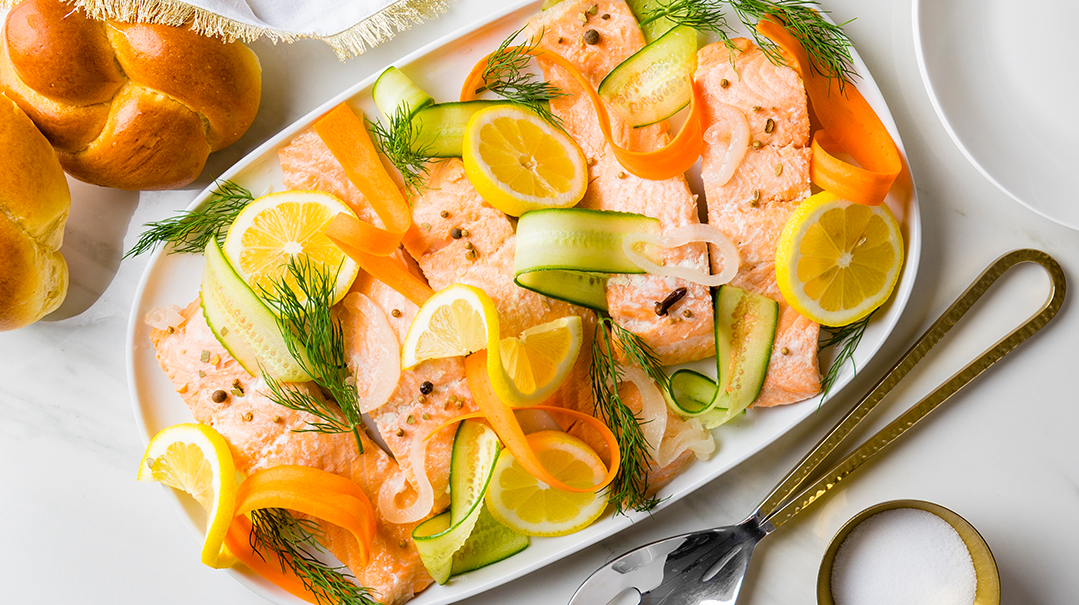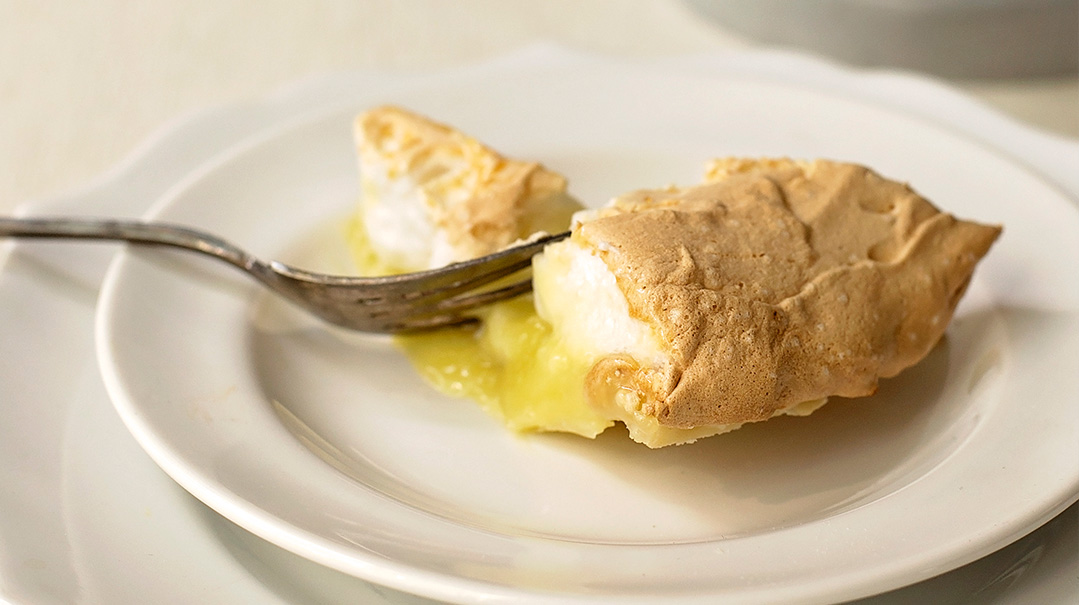Chicken Soup for Hundreds — with Love and Joy
| May 23, 2023
Rebbetzin Henny Machlis
Rebbetzin Henny (Lustig) Machlis had a goal to “bring Shabbos to the whole world,” and she started doing that together with her husband, Rabbi Mordechai Machlis, when they were in their early 20s, immediately after moving from Brooklyn to Israel in 1979. A teacher and a mother, Rebbetzin Machlis cooked for several hundred guests every Shabbos for decades.
In an incredibly inspiring biography, Emunah with Love and Chicken Soup: The Brooklyn-Born Girl Who Became a Jerusalem Legend (ArtScroll/Mesorah Publications, 2016), author Sara Yoheved Rigler offers close to 600 pages of fascinating stories about Henny Machlis and the wisdom she shared. Rebbetzin Machlis’s daughter, Tamar Ornstein, shared that she reads “Henny’s Torah Teachings” from the book “as a mussar sefer to give me chizuk, and to know what my mother would want me to do.”
You can try to replicate Henny’s Shabbos meals — her dips, her kugels, and her sweet chicken — but unless you know the secret ingredient, it’s futile. Food is love, she believed. And she was constantly feeding people — not just on Shabbos. The Machlis door was a revolving one, with hundreds of guests dining there over the course of Shabbos, and throughout the week at all hours of the day and night.
Tamar, the seventh of the fourteen Machlis children, shares what it was like growing up in the Machlis home, and the lessons she carries with her today when preparing for Shabbos.
Can you describe what Shabbos was like in your home as a child?
It was very happy, fun, and chaotic! Shabbos was always the most exciting day, and from my earliest memories, I remember counting the days toward Shabbos. It was always a very special and exciting time — like there was a big gift coming. Shabbos was the light of the week. It was the center of everything.
I read that your maternal grandmother, Boobie Edith Lustig, was known for her hospitality. Can you tell me more about her?
Shabbos meant a lot to my Boobie — she spent a lot of time getting ready for Shabbos, and put on special jewelry and clothing. She lit candles, and then was in a very different mood. She went to shul almost every Shabbos, she was very makpid on that. She was also very into the Shabbos Mevarchim davening.
Boobie loved kiddushim and loved making l’chaims with her loved ones. She used to host kiddushim in her home for yahrtzeits. Family being together was very, very important and meaningful to Boobie, and she invested a lot of energy, time, and money in it.
We know from the book that your mother would spend one morning a week ordering food. When did actual food preparation begin?
Some weeks girls would come and peel vegetables on Thursday afternoon. Other weeks money wouldn’t come until Friday morning, so we waited until then to shop and then cook.
Can you describe a typical Shabbos menu in the Machlis home?
On Friday night, my mother served four or five salads, chummus, fish, chicken soup, chicken (sweet and savory), kugels, and cakes. There were years we bought kugel, and years she made it. For years she made vegetable soup so the people who didn’t eat meat or chicken could also have soup.
At Shabbos lunch there were salads, chummus, and fish. At first only gefilte, but in recent years we added other types of fish for Sephardim and people with different tastes. There was also liver, turkey roll, kugels, and cholent. Dessert was ice cream, cut-up melon, and cake. She also often prepared a pareve cholent to accommodate vegetarians.
There were always lots of drinks at our Shabbos table. My father likes to have shefa — you’ll find more drinks at the Machlis Shabbos table than at a chasunah! And in the summer, it’s a must to have ice available so the drinks are refreshing for the guests.
Did your mother have a particular style of cooking?
My mother never followed a recipe, but she gave us all very precise instructions for cooking: Pour massive quantities of love into the food and send up a stream of prayer as you work. Ask the Ribbono shel Olam for the food to nourish those who eat it, to bring them closer to Hashem, to enhance their Shabbos and their happiness, and to satisfy them — among many other prayers.
She would constantly say, “Hashem, everyone who eats the food should love Torah, love Hashem, love mitzvos. You can make food a hundred times and it tastes different. Who makes it get cooked, burnt, not cooked? Hashem!” I remember sitting there watching her shvitzing and davening. She davened a lot when she cooked, and she cooked with her whole heart.
My mother also told me and my siblings not to worry about what our kids eat — if they’re picky or for other reasons. We should daven that they get all the nutrients they need from whatever they do eat. Once I stopped nursing one of my babies early because of some issues and was very worried about it, and she said, “Don’t worry — just daven that the baby will get everything he needs and all the benefits of nursing through the formula.”
What did you see when your mother lit Shabbos candles?
It was a special moment. One of my friends would laugh about it — the whole house could be flying, and my mother didn’t care. She davened with complete calm and serenity.
When she finished benching licht and said “Good Shabbos,” you could feel the difference. Whatever had been done until that point was done; whatever didn’t get done, it didn’t matter.
The guests were often astonished by the number of lights she lit and would question her about it. She would calmly explain that she lit candles for everyone in her family — each of her children, their spouses, and all the grandchildren.
What sense did you get of your mother’s relationship with Shabbos?
She was definitely a different person on Shabbos. First of all, she always wore a shiny white tichel on Shabbos. My parents viewed Shabbos as a delightful day, and the best time to show people the love, sweetness, and light of Judaism.
My mother usually didn’t nap on Shabbos because my parents went from one thing to the next. After the Friday night seudah, they would schmooze with the guests until the early hours of the morning. Then she sat with her Tehillim and fell asleep many times as she tried to finish it.
She liked going through the parshah on Shabbos, but didn’t always manage to do it. Still, she had favorite divrei Torah that she would repeat. She’d come home from leining and ask us kids, “What’s screaming out to you from the parshah?”
She was very practical and grounded, even while being so spiritual. Her divrei Torah always had a powerful, meaningful, practical message.
Tell me about the Shabbos meals — what were they like?
A big chunk of the seudah was Torah — my father is a huge talmid chacham and said at least three inspiring divrei Torah, and the guests were encouraged to share divrei Torah as well. If it was a nonreligious crowd, my father would speak about practical halachos — like describing how we wash our hands and elevate them before eating. He would explain customs connected to Shabbos and Jewish living, and imbue kedushah into the meal.
My mother would often get up to speak and say, “The Shechinah rests on all of your heads. Thank you for bringing the Shechinah into our home.” She liked to tell chassidish stories, and there was always a message that somehow, without even knowing most of the guests personally, connected specifically to them and their lives. She had siyata d’Shmaya with this.
My mother always said, “You feed the guests and satisfy them physically, and once the guf is taken care of, then you can feed the neshamah.” The meals were long because this was important to both of my parents — that there should be Torah and depth to the discussions at the meal.
As a young girl, my mother lived across the street from 770, and her father davened there on Shabbos even though they weren’t Lubavitch. She often quoted a teaching of the Rebbe regarding kiruv, that if you know alef, you teach alef. If you know beis, you teach beis. People shouldn’t be intimidated to share Shabbos and Yiddishkeit with other people — you share and teach what you know.
Was Shabbos more of a day of work for your family than a day of rest? How did your mother (and the kids) handle that?
It depends who you ask in the family! I’m number seven out of fourteen, and I was privileged to be at my mother’s side for many years and always felt honored and lucky. My older sister got married seven or eight years before I did, so I took the plunge and was in charge of the kitchen until I got married.
Yes, it was a lot of work, but preparing for Shabbos was never a burden — it was entertaining and exciting, even though it took energy. My mother would often say, “To do what’s right gives you energy.” The physical labor took a back seat to all the positivity. My older sisters worked harder than I did in those early years, but they also saw the benefits over the burden. Working so much for Shabbos and for guests gives a lot of brachah. The blessing seeps into the walls, and the shefa and kedushah is something else. I’ve seen this in many ways in my own life.
A True Role Model
“Henny Machlis radiated love and giving and joy,” shares Rebbetzin Rivka Foxbrunner of Atlanta, who spent time at the Machlis home. “She had an unlimited capacity to give. Counterintuitively, the more she gave, the more resources she had to keep going.”
Most of us can’t replicate what Henny created in her home, or what the Machlis family continues to provide to hundreds of guests each Shabbos. But while each of us may be just a small “flame,” we can light up so many other people’s lives with kindness, sharing, hosting, and giving. When we push ourselves to give, we may find we can give even more.
May our efforts in this realm be rewarded, and a zechus for all the role models who inspired us!
One of Henny’s Torah Teachings
Reprinted from Emunah with Love and Chicken Soup, by Sara Yoheved Rigler, with the permission of the publisher, artscroll/Mesorah Publications
What made Yisro merit to be the father-in-law of Moshe Rabbeinu, the greatest Jew ever? In Maseches Sanhedrin (103b), the Gemara says it was the hospitality and generosity of Yisro that afforded him this great privilege. “Rabbi Yochanan said, ‘Great is the reward of giving food to someone, because it brings people close.’”
That is one of the reasons we started having guests — in order to be mekarev people. If you give people food, then they have all their bodily needs taken care of, and then they can open their neshamah and their heart, and have space to listen to ruchniyus, to spirituality.
Quick One-Bowl Vanilla Cake
YIELDS 4 9X13-INCH (23X33-CM) BAKING PANS
- 24 eggs
- 4 cups oil
- 4 cups seltzer
- 12 cups flour
- 12 cups sugar
- 1 cup (16 Tbsp) vanilla sugar
- ¼ cup (4 Tbsp) baking powder
- pinch salt
Preheat oven to 350°F (175°C).
Beat eggs, oil, and seltzer together. Add all dry ingredients and mix well until there are no lumps. Pour into 4 9x13-inch (23x33-cm) baking pans. Make sure to daven that everyone who eats the cake should feel Hashem’s love, that they should love Torah and mitzvos, and that they should feel the sweetness of Shabbos. Bake for 30–40 minutes.
Variations: You can top with cinnamon and sugar, chocolate chips, or blueberries. You can also swirl in chocolate syrup and make it into marble cake.
Note: When making batter with this much flour, one has to take challah from it. Ask your rav how to do it.
Sweet Chicken
YIELDS 100 PORTIONS
- 25 chickens, quartered (without necks and wings)
- 100 oz (2.83 kg) ketchup (usually 4–5 bottles, unless you get an extra-large size)
- 5 lb (2.25 kg) brown sugar
- 2 large handfuls garlic powder
- 1 cup sweet red wine or orange juice (optional)
- ¼ cup soy sauce (optional)
Preheat oven to 450°F (230°C).
Mix all sauce ingredients together and pour over chicken. The main thing is to daven that the chicken should be delicious and cook a perfect amount and be very soft, not underbaked, not overbaked, and not burned, and that everyone who eats it should taste the taste of the mahn that came down from Heaven.
Pour the sauce over the chicken. You can add sliced onions on top of the chicken before you add the sauce. Cover the pan and bake for about 2 hours.
Note: If you’re making the chicken in a deep pan and layering the pieces, make sure to put sauce between each layer of chicken.
(Originally featured in Family Table, Issue 844)
Oops! We could not locate your form.

